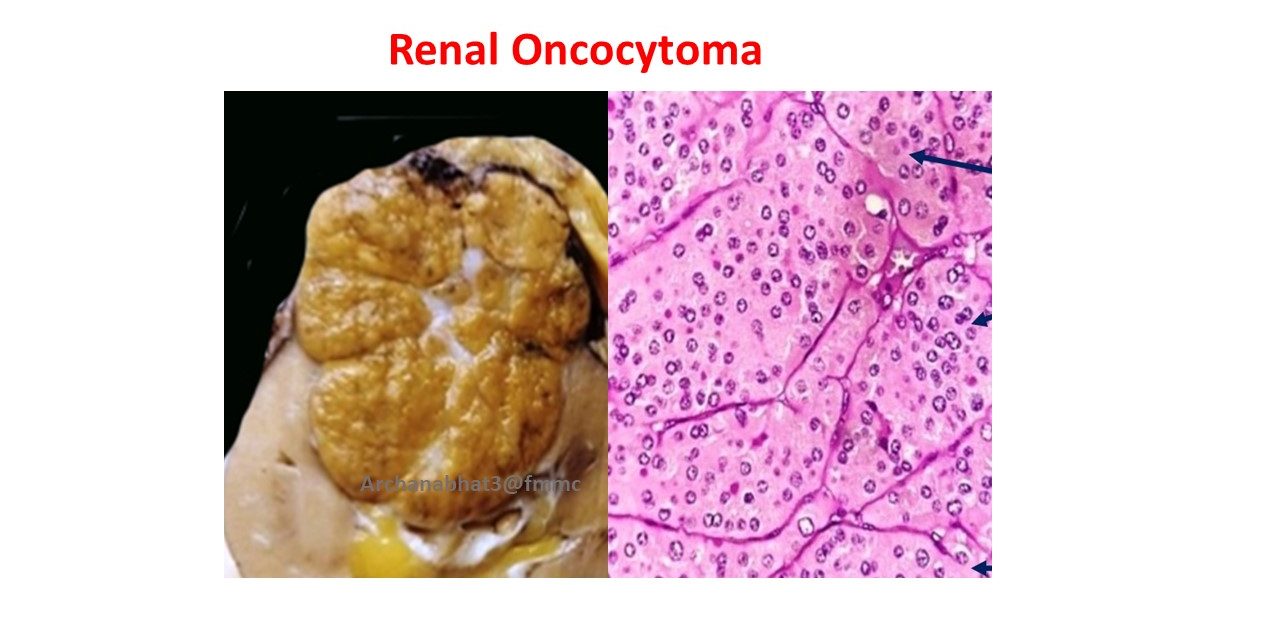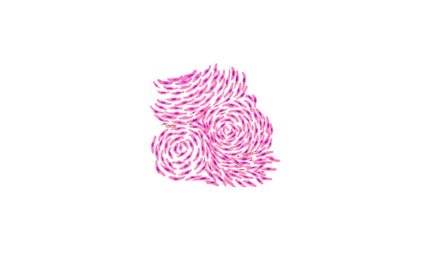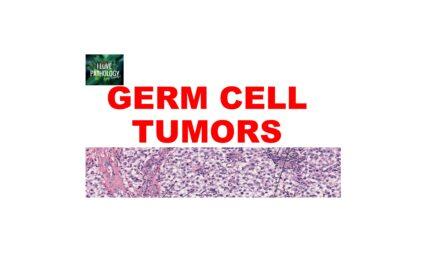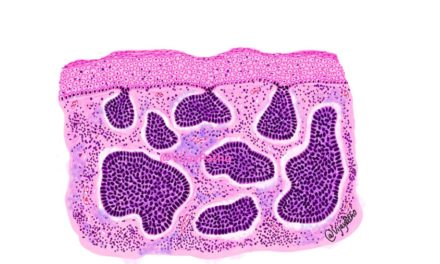Renal Oncocytoma is a benign tumour. It accounts for 5 to 15% of all resected renal tumours. It arises from the cells of collecting ducts. It occurs commonly in adults and shows male predominance. Most of these tumors are frequently small in size and often incidentally found. They can be solitary or multifocal and rarely bilateral.
Genetic syndromes such as tuberous sclerosis complex and Birt-Hogg-Dube syndrome may be associated with multiple and bilateral Oncocytomas
Gross Pathology:
Oncocytoma is well circumscribed, unencapsulated, solid tumour with a tan to “mahogany” brown colour and many show lobulations. Often they have a central pale white “stellate” scar. Perinephric fat may be involved occasionally.
Mahogany: this is a hard reddish brown wood from a tropical tree. the appreance of the tumor resembles this color and hence the term ” Mahogany” brown.
Stellate: means something arranged in a radiating pattern, like that of a star. The scar in these tumors usually has this appearance hence the term “stellate scar”
Microscopy :
Oncocytoma is composed of tumour cells arranged in tightly packed nests or tubules. The cells have a central, small, round, vesicular nucleus and abundant eosinophilic, granular cytoplasm. Stroma is myxoid to hyalinised. Rarely pleomorphic nuclei / bizzare cells can be seen.
Note: The intense eosinophilia and granularity in these oncocytic tumor cells is due to marked increase in mitochondria ( as evidenced by electron microscopy)
Prognosis: These are Benign tumors. pleomorphism/perinephric fat involvment will not affect prognosis.
Additional info:
Stellate scar is not specific to renal oncocytomas. They are also seen in the following lesions/tumors
Focal nodular hyperplasis-liver
Chromophobe renal cell carcinmoma
Serous cystadenoma-pancreas









